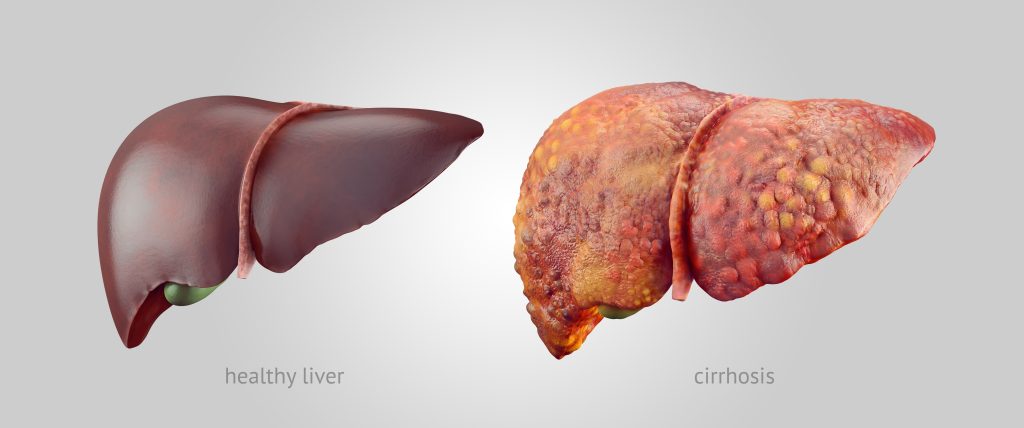19 Dec 2025
Age Specific Related to Psoriasis in Amritsar


Dr. Sumeet Kainth
22 Jun 2025
Call +91 80788 80788 to request an appointment.
Liver diseases are among the most prevalent health concerns globally, affecting millions and leading to significant morbidity and mortality. Among these conditions, liver fibrosis and cirrhosis are more common yet often misunderstood. While both conditions relate to liver damage, they represent different stages of the disease process. Understanding the progression from liver fibrosis to cirrhosis is crucial for early intervention and better patient outcomes.
At Livasa Hospitals in Mohali, our goal is to educate and empower individuals regarding liver health. This blog aims to elucidate the differences between liver fibrosis and cirrhosis, how they develop, their symptoms, treatments available, and the importance of early diagnosis. We also discuss how patients can effectively manage these conditions and what lifestyle changes can support liver health in Punjab.
Liver fibrosis is an accumulation of scar tissue in the liver, which occurs as a response to inflammation and injury. Various factors, including viral infections, alcoholism, and non-alcoholic fatty liver disease (NAFLD), can cause liver injury. When the liver is injured, it attempts to repair itself, leading to the formation of fibrosis over time.
The liver has a remarkable ability to regenerate; however, chronic damage can overwhelm this regenerative capacity, leading to persistent fibrosis. The advancement to fibrosis can often be asymptomatic in its early stages, making awareness and preventive care crucial. According to the Global Burden of Disease study, liver disease is responsible for an estimated 2 million deaths annually worldwide, highlighting the importance of recognizing and treating fibrosis early.
Common Causes of Liver Fibrosis Include:
Cirrhosis is the late stage of scarring of the liver caused by many forms of liver diseases and conditions, such as hepatitis and chronic alcoholism. The progression to cirrhosis signifies a point at which the liver's function is impaired, leading to life-threatening complications.
Unlike fibrosis, cirrhosis symptoms begin to manifest and can severely affect quality of life. These may include fatigue, easy bruising, swelling in the legs, and confusion due to the buildup of toxins the liver can no longer filter. Cirrhosis is often considered irreversible; however, management and treatment can significantly improve quality of life and, in some cases, slow disease progression.
Common Causes of Cirrhosis Include:
While fibrosis and cirrhosis can be related, they have important differences that are crucial for diagnosis and treatment. Here’s a comparative breakdown of the two conditions:
| Aspect | Liver Fibrosis | Cirrhosis |
|---|---|---|
| Definition | Buildup of scar tissue in the liver | Severe scarring leading to liver dysfunction |
| Reversibility | Can be reversed with treatment | Generally irreversible |
| Symptoms | Often asymptomatic in early stages | Fatigue, jaundice, swelling, and confusion |
| Implications | May lead to cirrhosis if untreated | Can lead to liver failure and is life-threatening |
Cirrhosis generally progresses through several stages, categorized based on liver function. Understanding these stages can guide patients in making decisions regarding their treatment and management. The stages include:
Symptoms can vary significantly between liver fibrosis and cirrhosis. Understanding these symptoms can aid in early detection and management. Here’s a closer look:
Symptoms of Liver Fibrosis:Early diagnosis is essential for the effective management of liver diseases, especially in regions like Punjab where liver diseases can be rampant due to lifestyle factors. Various diagnostic methods are available to assess liver health, including:
Treatment options vary significantly between liver fibrosis and cirrhosis, emphasizing the need for timely diagnosis and intervention. At Livasa Hospitals in Mohali, our hepatology team specializes in understanding and managing liver conditions. Treatment strategies may include:
Understanding the dynamics of liver fibrosis and cirrhosis is vital for effective management of liver diseases. Awareness of the symptoms, diagnosis, and treatment options empowers patients to seek care early and actively participate in their health management. At Livasa Hospitals in Mohali, our dedicated team specializes in liver health consultations to help individuals navigate the complexities of liver diseases.
We encourage anyone concerned about their liver health in Punjab to reach out for comprehensive care. Managing liver fibrosis effectively can prevent progression to cirrhosis, preserving life and improving the quality of living. Our hepatology experts are ready to assist you in understanding your liver health better.
Book a liver health consultation at Livasa Hospitals today by calling +91 80788 80788 or make an appointment online. Your liver health is our priority!
+91 80788 80788
Livasa Healthcare Group Corporate Office,Phase-8, Industrial Area, Sector 73, Sahibzada Ajit Singh Nagar, Punjab 160071
livasacare@livasahospitals.in
| Mohali | +91-99888 23456 |
| Amritsar | +91-99887 49494 |
| Hoshiarpur | +91-99883 35353 |
| Nawanshahr | +91-75081 82337 |
| Khanna | +91-98888 05394 |